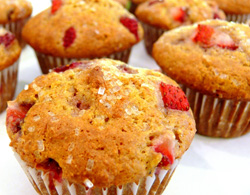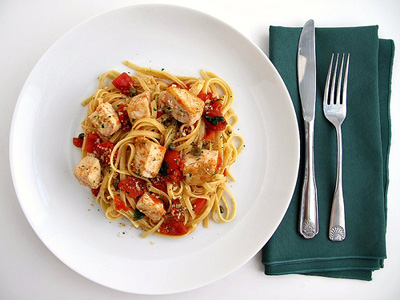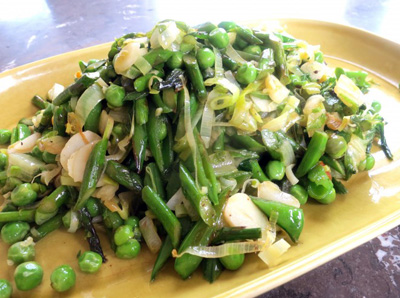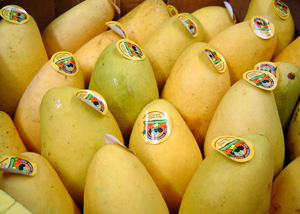 I love this time of year. So many good things are available at the market and in such abundance. I often become distracted with all the choices, making it difficult not to come home with more groceries than I need. I then proceed to have a freak out while trying to use it all up.
I love this time of year. So many good things are available at the market and in such abundance. I often become distracted with all the choices, making it difficult not to come home with more groceries than I need. I then proceed to have a freak out while trying to use it all up.
I definitely overbought on strawberries last week and needed a plan. Luckily I came across these Strawberry Yogurt Muffins over at Culinary Wannabe. They are the perfect breakfast muffin; healthy, low-cal, filling and very yummy. I individually wrapped each one and froze them together in a Ziploc bag for a quick breakfast.
This muffin uses part whole wheat flour which I prefer when it comes to breakfast noshing. However, these do not taste healthy at all. In fact, they taste a bit sinful. They are awesome.
If you have some strawberries to use up, I would consider making these, you'll love them.

 What do Jerusalem artichokes, horseradish and dandelion greens have in common? You'll never guess. Each has a name that is an English version of a foreign name. The Jerusalem artichoke is a variety of sunflower, and the name is derived from "girasole" which means sunflower in Italian. Horseradish is "meerrettich" in German and because "meer" sounds like "mare" the English called it horseradish. Dandelion comes from the French "dent de lion" or lion's tooth, in reference to the jagged leaves of this bitter yet tasty weed.
What do Jerusalem artichokes, horseradish and dandelion greens have in common? You'll never guess. Each has a name that is an English version of a foreign name. The Jerusalem artichoke is a variety of sunflower, and the name is derived from "girasole" which means sunflower in Italian. Horseradish is "meerrettich" in German and because "meer" sounds like "mare" the English called it horseradish. Dandelion comes from the French "dent de lion" or lion's tooth, in reference to the jagged leaves of this bitter yet tasty weed. Every Friday night I like to do pasta night. I love pasta dishes because they're quick to make and so satisfying to eat. And they don't at all need to be complicated. Sometimes all you need are a few pantry staples like canned tomatoes, capers, or olives to make a delicious sauce that doesn't take hours to cook. That's the true appeal of pasta.
Every Friday night I like to do pasta night. I love pasta dishes because they're quick to make and so satisfying to eat. And they don't at all need to be complicated. Sometimes all you need are a few pantry staples like canned tomatoes, capers, or olives to make a delicious sauce that doesn't take hours to cook. That's the true appeal of pasta. This is what spring looks like. Truly. So why not make a dish that takes the best of those green, grassy, sweet flavors, adds garlic, great olive oil and a hit of salt and serve it up in one dish? The subtle beauty of all these colors of green tangled together help us understand the idea of renewal inherent in the spring holiday celebrations of Easter or Passover.
This is what spring looks like. Truly. So why not make a dish that takes the best of those green, grassy, sweet flavors, adds garlic, great olive oil and a hit of salt and serve it up in one dish? The subtle beauty of all these colors of green tangled together help us understand the idea of renewal inherent in the spring holiday celebrations of Easter or Passover. There are two things in my world that tell me spring is officially here. One, the call of the loons wake me from my morning slumber as they float on the river just outside my window. That just happened Wednesday morning. Two, the small juicy yellow-skinned mangoes are ready to purchase by the case at my favorite little Asian market in Fargo. Done. Spring is here.
There are two things in my world that tell me spring is officially here. One, the call of the loons wake me from my morning slumber as they float on the river just outside my window. That just happened Wednesday morning. Two, the small juicy yellow-skinned mangoes are ready to purchase by the case at my favorite little Asian market in Fargo. Done. Spring is here.